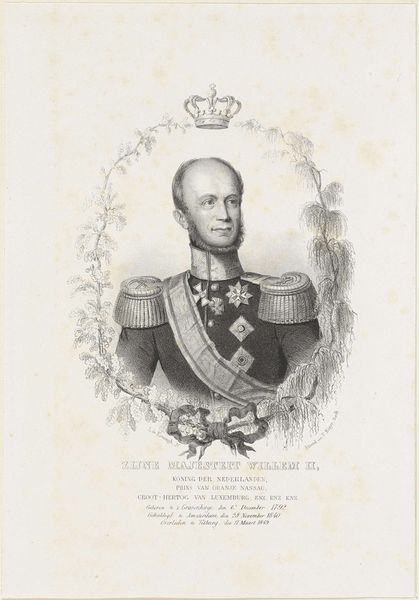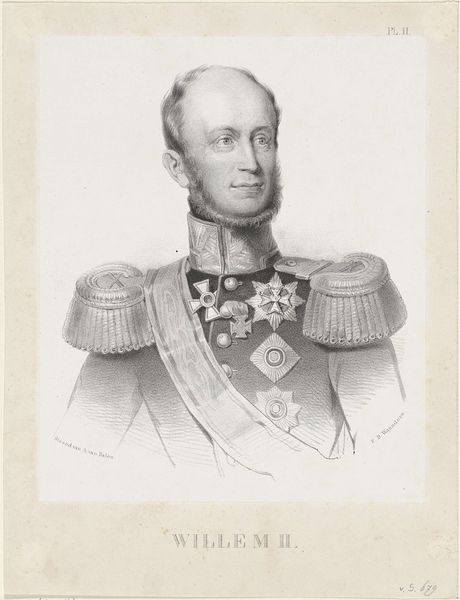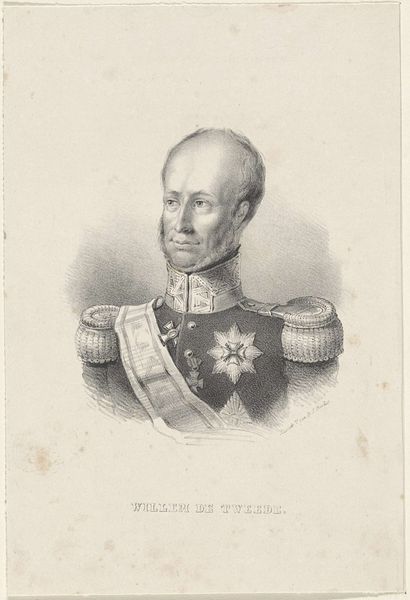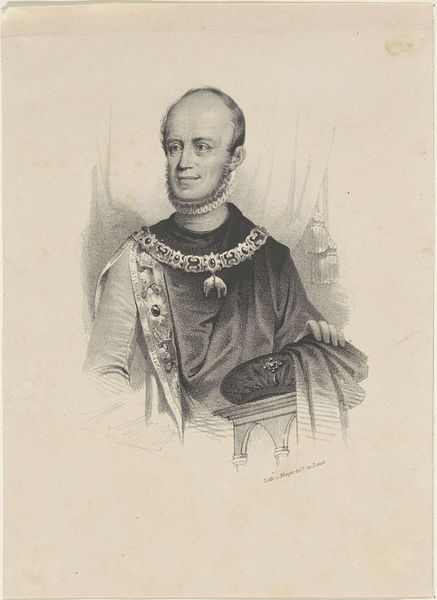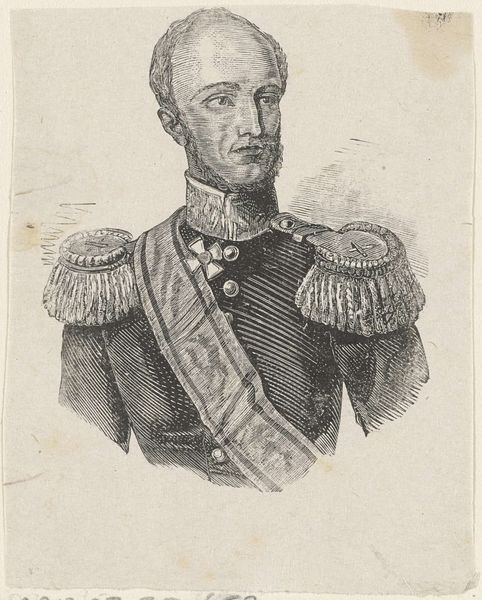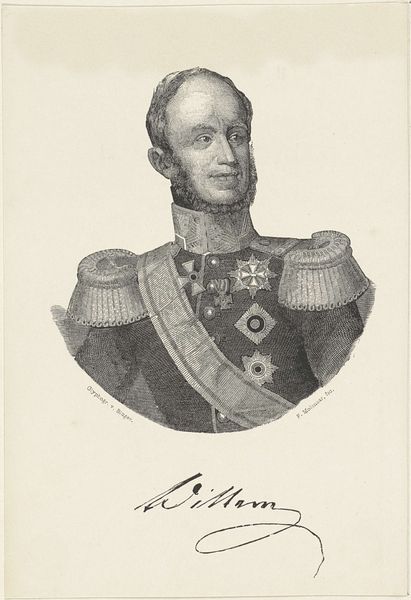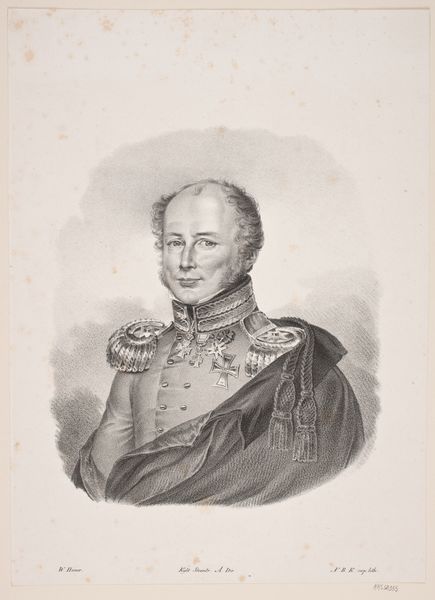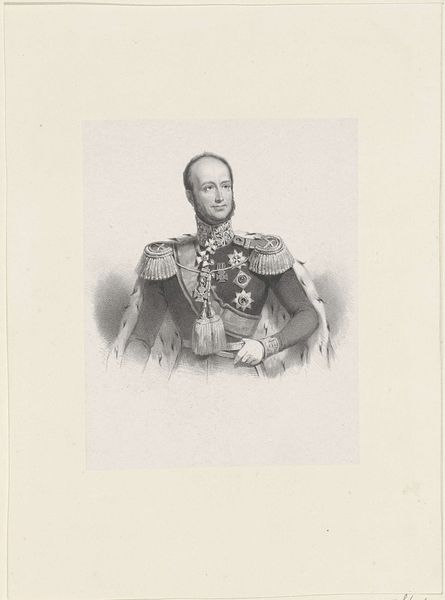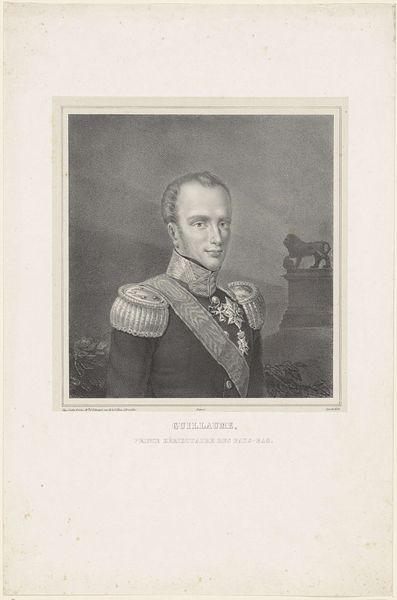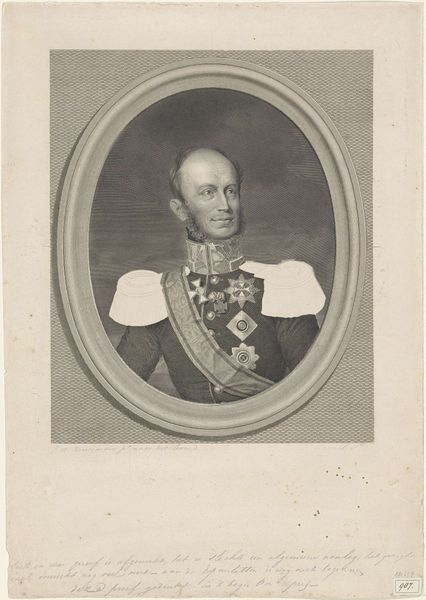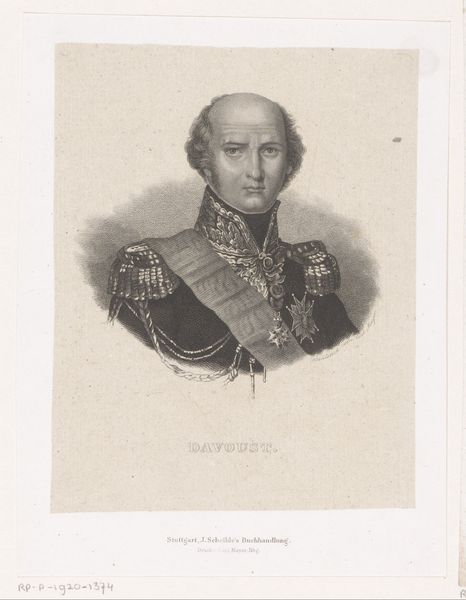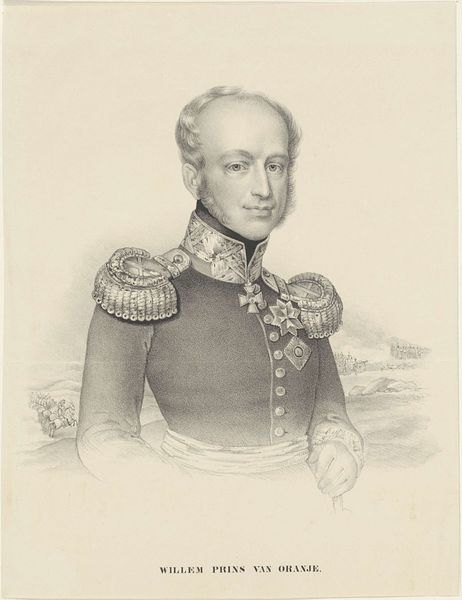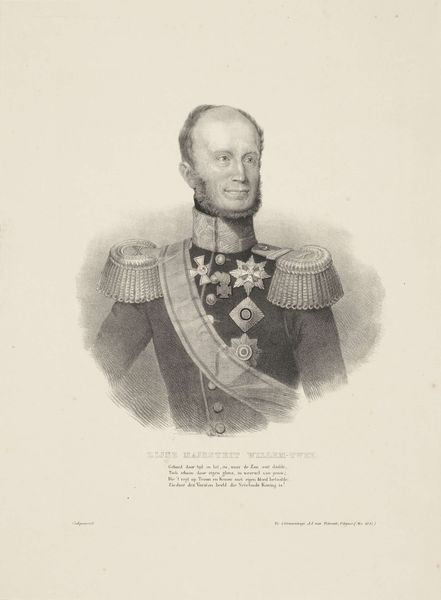
print, engraving
#
portrait
#
neoclacissism
# print
#
old engraving style
#
history-painting
#
engraving
Dimensions: height 532 mm, width 381 mm
Copyright: Rijks Museum: Open Domain
This is a portrait of Willem II, King of the Netherlands, made through the technique of lithography. Lithography allowed for the relatively quick and inexpensive production of images. The process involves drawing on a flat stone or metal plate with a greasy substance, then applying ink which adheres only to the drawn areas. It was truly revolutionary. Before this, images were made by hand, individually, so lithography democratized image making. This meant that portraits of the king could be widely distributed, fostering a sense of national identity and loyalty. Note the precision of the lines, the subtle gradations of tone. The wreaths, drapery and royal regalia surrounding Willem II, all rendered with impressive detail. Without lithography's reproducibility, the very idea of celebrity portraiture would not exist as we know it. Looking at this print, we can appreciate the ingenuity of the lithographic process, and its role in shaping social and political life during this time. It blurs the line between art and industry, reminding us of the profound connections between visual culture, technological innovation, and the dynamics of power.
Comments
No comments
Be the first to comment and join the conversation on the ultimate creative platform.
